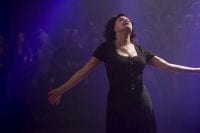“Black Lodge/White Lodge” is the 25 Years Later version of the popular point/counterpoint style of debating, wherein two sides take opposing views and hash it out on stage. Here, we’ll be debating the finer points of Twin Peaks lore, in writing, for your reading pleasure.
Today’s debate is another four-way. In each corner: J.C. Hotchkiss, Ali Sciarabba, Eileen G. Mykkels, and Lindsay Stamhuis
The topic is: Who is the dreamer?
Black Lodge: by Lindsay Stamhuis
We are the dreamer who dreams and then lives inside the dream.
But who is the dreamer?
Of all the various sleepers who awoke in Part 16, there was one that stood out in my mind. My colleagues will endeavour to convince you that their answers are the right ones. But I’m positive that there is only one right answer: the dreamer is Audrey Horne.
From the beginning of Audrey’s first scenes, fans were concerned that something was seriously off with her. Our suspicions were confirmed when, at the end of Part 16, Audrey finally made it to the Roadhouse and experienced a trippy solo dance sequence that felt ripped from the dream dictionary I used to own when I was in junior high school. The MC announced her theme, the crowd parted, and Audrey swayed beneath a purple spotlight…
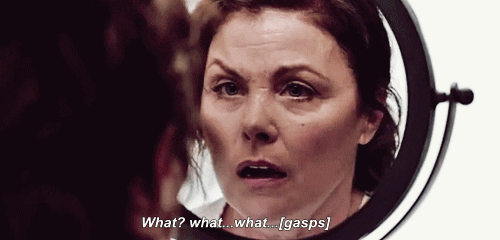
…until a brawl broke out and Audrey, panicked, begged her put-upon husband Charlie to get her out of there. At this point we smash cut to a shaky, crackling, Kubrick-esque space, and we find Audrey—no makeup, messy hair, terrified—staring at herself in a mirror, confused and alone.
This has led some—myself included—to conclude that everything we’d seen of Audrey up until this point was a dream, and that Audrey had literally just woken up. Now I don’t mean dream in the “mere sorting and cataloguing of the day’s events by the subconscious” that we do every night when we sleep, although it could absolutely be just that. Some have suggested that Audrey has been in a coma, and while I’m hesitant to rule that out (since it was my first guess about the whole thing) I think it’s far more likely that this is a kind of fabricated Lodge dream, something to keep the truth of her actual situation from her while the real Audrey remains trapped in the same kind of Lodge-like space that she’s been in since Mr. C assaulted her. This is supported by the crackling electricity and the backwards jazz band, playing “Audrey’s Dance” backwards, a trademark of the Lodges.
Basically, I think Audrey has been “living” inside a dream created by her Lodge captors. And now she’s awake.
Seeing as how her awakening happens at the very end of Part 16, right before the credits roll, I believe this means that her awakening is the most critical one. It’s the last one. It’s the most dramatically unsettling one. It underscores the surreality of all of her scenes leading up to this. Anyone else being the dreamer would take away from the one-two punch that is Audrey dancing/Audrey staring into the mirror. (Unless there are multiple dreamers, which could still be the case…)
But now the real question becomes is how much of this has been a dream? I wondered 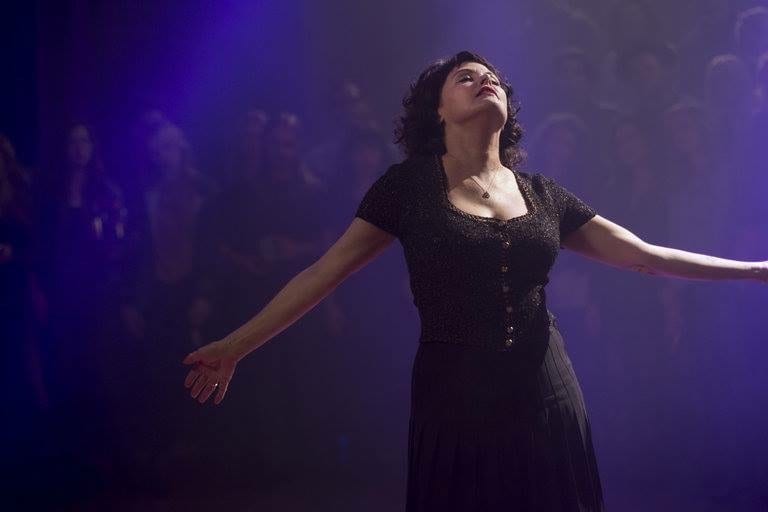 about this last week with Scott Prendergast and though we couldn’t land on a definite answer, the idea that some or all of the Roadhouse scenes were happening in Audrey’s head did stick out for us. Perhaps the scenes with the live bands are not real, while the “jukebox scenes” were the real ones. Certainly the conversations in the booth are striking for their dream-like qualities, not to mention the links they present between Audrey and the Roadhouse, since those are the only two places where many of the themes and characters make appearances. But what does all of this mean for the real life characters we see in both the Roadhouse and the outside world? Are Shelly and Renee, James and Freddie all fabrications in Audrey’s mind? Would Twin Peaks and Lynch/Frost really pull a Dallas/Newhart/St. Elsewhere on us?
about this last week with Scott Prendergast and though we couldn’t land on a definite answer, the idea that some or all of the Roadhouse scenes were happening in Audrey’s head did stick out for us. Perhaps the scenes with the live bands are not real, while the “jukebox scenes” were the real ones. Certainly the conversations in the booth are striking for their dream-like qualities, not to mention the links they present between Audrey and the Roadhouse, since those are the only two places where many of the themes and characters make appearances. But what does all of this mean for the real life characters we see in both the Roadhouse and the outside world? Are Shelly and Renee, James and Freddie all fabrications in Audrey’s mind? Would Twin Peaks and Lynch/Frost really pull a Dallas/Newhart/St. Elsewhere on us?
All I can say with any certainty is that the final two Parts airing this Sunday are going to blast this whole thing wide open. If I’m right and Audrey is the dreamer, be prepared to have everything we’ve come to expect turned upside down!
White Lodge: by Ali Sciarabba
Since the very beginning of the original series, Agent Cooper’s dreams have been crucial to the events that unfolded in the town of Twin Peaks. His dreams have always been prophetic and he is able to see and intuit things that the average person cannot. That is because Agent Cooper is not an average person—he is the Dreamer.
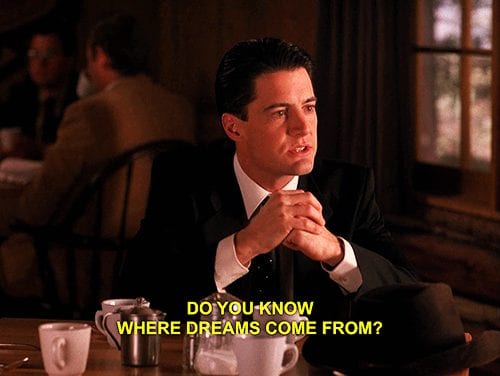
I don’t subscribe to the literal interpretation of the Dreamer: the idea that the entirety of The Return is simply someone’s dream. However there is a metaphorical significance to Gordon’s Monica Bellucci dream and the message within. When I think of a dreamer, I don’t interpret that literally. I don’t think that “the dreamer” is a person who is asleep and having a dream. Instead, I think of someone who has dreams, as in the things that they hope for in the future. In the original series, Cooper had several dreams: to live simply among the Douglas firs and the good people of Twin Peaks, to make love to a beautiful woman for whom he had a sincere affection, to have a family, and to be a genuinely good man. When Cooper was trapped in the Lodge and Mr. C was let loose on the world, Cooper’s dreams were put on hold. Not only that, Mr. C created Dougie, whose life in Vegas was a perversion of the Good Dale’s dream for his future.
I think the events of the Las Vegas portion of The Return—in which the Good Cooper is trapped in sort of a waking dream—provides the best evidence that Agent Cooper is meant to be the Dreamer. But it’s not just the Good Dale who is the dreamer. Mr. C is part of Cooper, and he is also the Dreamer, though what he creates are nightmares.
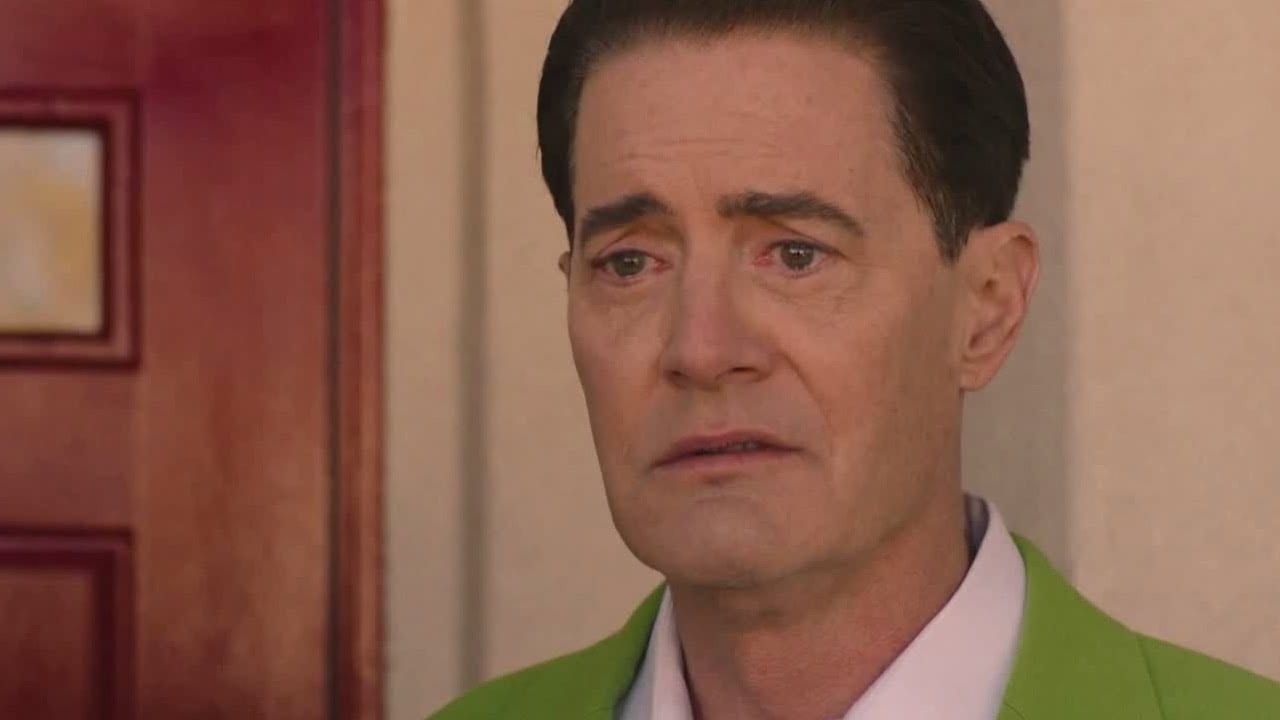
The city of Las Vegas is the polar opposite of the small town of Twin Peaks in pretty much every way. Likewise, Dougie Jones (as he was before Cooper took over) was the polar opposite of the man the Good Dale wanted to be. He was a cheater, a terrible father, a liar, and a thief. Mr. C was able to create, through the manufactured Dougie Jones, a perverted version the Good Dale’s dream, and for a while that nightmare was the reality. Ultimately, though, the Good Dale made it out and replaced Dougie, and because he is also the Dreamer, he was able to put things right while he lived inside that dream.
When Coop took over for Dougie, he was trapped inside a body he was not able to control, but we now know Cooper was fully present in there. His intuition and strength of character guided him to take the nightmare Mr. C had created via Dougie and turn it into a version of the Good Dale’s dream. He fixed Janey-E’s marriage and Sonny Jim’s relationship with his father. He righted the wrongs done at Lucky Seven Insurance. He brought luck and joy to those he touched, made unlikely allies in the Mitchum Brothers, and brought out the hearts of gold in the gangsters. He did all of this while being a “dreamer” inside of his own body. He was the dreamer who dreamed and then lived inside of the dream, and now he is awake.
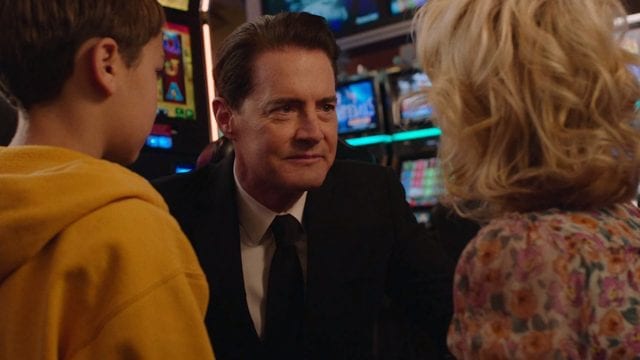
While Cooper was “sleeping,” the town of Twin Peaks became even more nightmarish than it was in the time surrounding Laura Palmer’s death. The darkness in those old woods has spread throughout the town like a disease, infecting everyone it touches. There is very little happiness and a whole lot of darkness in modern-day Twin Peaks, but now that the sleeper is awake, the Dream is no more, and he’s on his way back to the town he loves so much, I think he might be able to turn things around just like he turned Dougie’s life around. Cooper’s dream of the good life in Twin Peaks may soon come true, but before he can live inside of his dream, Cooper has to destroy the nightmare that Mr. C created.
Red Room: by J.C. Hotchkiss
“We are the music makers, And we are the dreamers of dreams,” we hear this in Willy Wonka and the Chocolate Factory, but this was a verse from Ode by Arthur O’Shaughnessy’s book, Music and Moonlight (1874). Okay, J.C., thanks for the history lesson but what does this have to do with debating, “Who is the Dreamer”? Well my beautiful gifted and damned friends, it is because I believe that we are the dreamers. Not Cooper, not Audrey, but us, the viewers of this beautiful madness that has been put before us. We are the Dreamer.
When I first heard that Twin Peaks was coming back, I actually thought I was dreaming. Twenty Five (okay, when all is said and done twenty seven, but who’s counting) years later we would get to see Cooper, Truman, Hawk, Andy, Lucy, Big Ed, Norma, Shelley, Bobby, etc, etc! We would see what really happened to our beloved Special Agent. Was he still locked away in the Black Lodge? How were David Lynch and Mark Frost going to approach this new series? Well we got our answer in a big way.
The Return has been nothing short of spectacular. First of all, it is very much a fine work of art. Changing and shifting, depending on how you look at it. A beautiful longing dream come true for most of us. Lynch is the master of direction, not only what we see on the screen, but our auditory senses as well (for those don’t know, he also provides Sound Design for Twin Peaks: The Return). Frost’s beautiful script with nuances so subtle, sometimes when we feel we are being stabbed through the heart (I’m looking at you Mother & Son from Part 6) you are then greeted with a surprise or a smile at the other end (I’m looking at you Harry Dean Stanton, in every scene you have been in thus far). Throughout the experience though, I have put together my own idea of what certain scenes mean, or even how I view them. For me, Dougie was an experience in embracing everything around you for the first time and taking your time to enjoy the little things, like this whole experience of Twin Peaks returning. For others, Dougie was an annoying distraction from the sharp witted Agent Dale Cooper that they were waiting for to say, “Damn fine cup of coffee” and give us a thumbs up. Neither one of these feelings is wrong by any means, but my dream was to be taken on a journey and I was willing to give up control of my ideals of this return and let Lynch/Frost steer my dream.
work of art. Changing and shifting, depending on how you look at it. A beautiful longing dream come true for most of us. Lynch is the master of direction, not only what we see on the screen, but our auditory senses as well (for those don’t know, he also provides Sound Design for Twin Peaks: The Return). Frost’s beautiful script with nuances so subtle, sometimes when we feel we are being stabbed through the heart (I’m looking at you Mother & Son from Part 6) you are then greeted with a surprise or a smile at the other end (I’m looking at you Harry Dean Stanton, in every scene you have been in thus far). Throughout the experience though, I have put together my own idea of what certain scenes mean, or even how I view them. For me, Dougie was an experience in embracing everything around you for the first time and taking your time to enjoy the little things, like this whole experience of Twin Peaks returning. For others, Dougie was an annoying distraction from the sharp witted Agent Dale Cooper that they were waiting for to say, “Damn fine cup of coffee” and give us a thumbs up. Neither one of these feelings is wrong by any means, but my dream was to be taken on a journey and I was willing to give up control of my ideals of this return and let Lynch/Frost steer my dream.
Someone else watching may have a fear of giving up that control, so their experience may be having their dream become a nightmare. Regardless of dream or nightmare, what Twin Peaks does for us, is put us on the outside looking in on an immense windswept dream. To make us perceive and think in ways that makes sense to us, and only us. Awaken our creative side and be a part of this wonderful experience. Lynch wants us to create our own dream, through him giving us the reigns by creating character and context. As one Lynch’s most popular quotes, “Float with me in the world of ether.” This world in which he created this ether was meant for us to swim around in, to bathe ourselves with our fears, our loves, and our desires. To be born, like Bob (but without the evil and thirst for power over a host).
The definition of dream from Merriam Webster:
1 – a series of thoughts, images, or emotions occurring during sleep
2 – an experience of waking life having the characteristics of a dream: such as
a: a visionary, creation of the imagination;
b: a state of mind marked by abstraction or release from reality;
c: an object seen in a dreamlike state , a vision
3 – something notable for its beauty, excellence, or enjoyable quality
4: something that fully satisfies a wish
This experience and the event of Twin Peaks: The Return as a whole has been one vast, stunning creation, essentially a dream come true. In my eyes, it should be noted for its beauty, precision, and absolutely absurdist enjoyable quality. David Lynch, Mark Frost, Kyle MacLachlan, et al, have served us Peaks fans a feast of dreams. Look at the art, the writing, the banter. They have inspired and helped initiate the dream within us all.
Personally, I think that Lynch & Frost decided that it was the right time, to bring this dream to us. As the Woodsman repeats over and over, “This is the water, this is the well. Drink full and descend.” I believe we have seen the water; we have witnessed the well, this dream come true we should drink in fully, and descend with the journey to the very end, when the sleeper must awaken and this beautiful dream comes to an end. 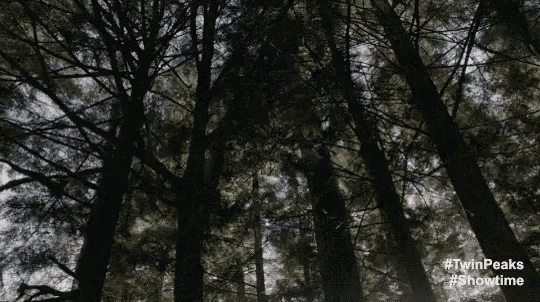
Mauve Zone By Eileen G. Mykkels
What is life? A madness. What is life? An illusion, a shadow, a story. And the greatest good is little enough; for all life is a dream, and dreams themselves are only dreams.
Pedro Calderon de la Barca
Who is the dreamer has been the sleeper question of the past couple parts. Everyone and no one is talking about it, and everyone and no one claim to know or have some theory as to who it might be. My colleagues have all supported their points with phenomenal ideas, but I propose that instead of a character or the audience, the dreamer is David Lynch.
Over the course of this phenomenal television-pioneering crusade, it’s become obvious that The Return is Lynch’s Magnum Opus. Visually, audibly and thematically he has pulled from everything he’s done in the past and refined it into something new and extraordinary, something that resonates on a subconscious level with viewers, something both terrifying and transcendent – the hallmarks of a dream. Many, while watching, who were not familiar with David Lynch the artist have come to know this aspect of him better. David Lynch the filmmaker is a known entity for many entering the Twin Peaks world, but his art is less well known, even among fanatics, at least consciously. To me, The Return is art. Yes, it’s art house and David Lynch is an auteur, but The Return isn’t just art house, it’s art. David Lynch is first and foremost and artist. And all of what David creates in his art (or at least a good majority of it) comes from his dreams.
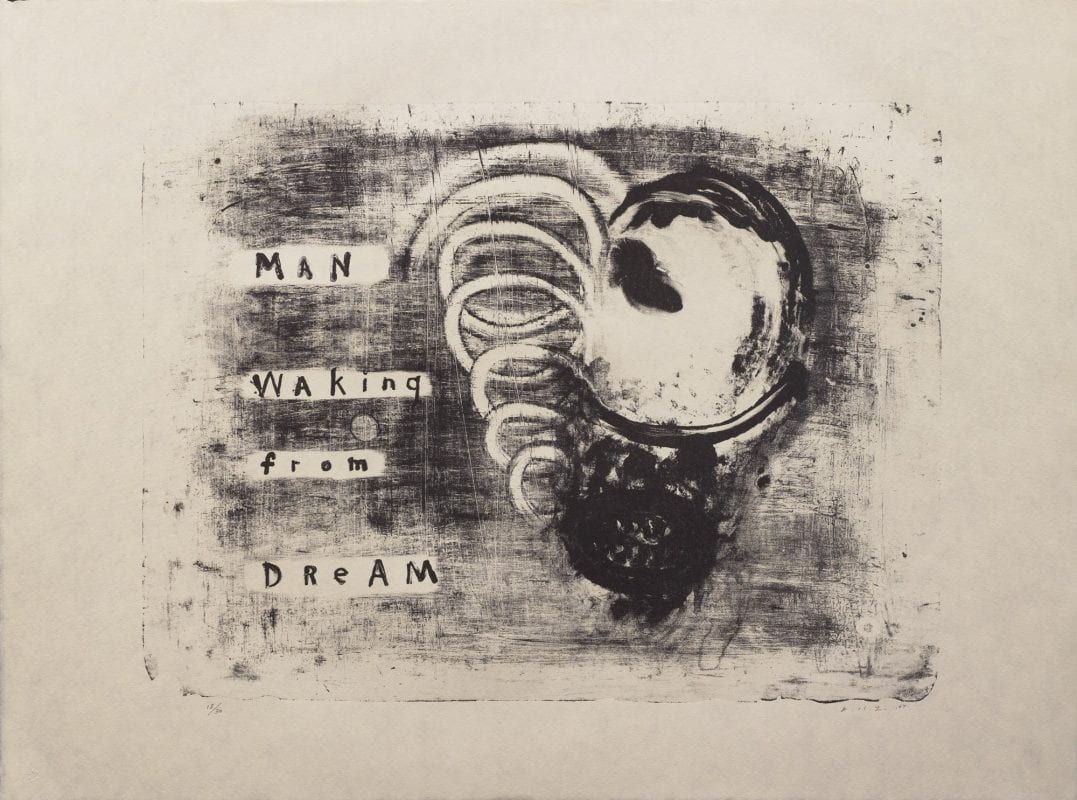
Knowing this, knowing how much of dreams influenced the original run, and seeing the paths that Lynch has taken through this season, it would not surprise me at all if rather than a character, the dreamer was in some sense David Lynch himself. I do think that this theory works especially well with the idea that the audience is also the dreamer, but even on it’s own, the Dreamer as David Lynch is particularly indicative of the metaphysical nature of dream transcendence within life as a whole. After all, dreams are merely the fragments of our day and recent thoughts re-edited together into some semi-cohesive visual spectacular. How apropos that the editing of The Return has been accomplished in the same way: that people we thought we knew are not quite who they were, and some things have remained utterly the same, invincible to the ravages of time. It is no less than the culmination of David Lynch’s dream vision immortalized on film to stand the test of time.
To hop away from the philosophical indications of this angle, let’s look at what we have in terms of actual content and context. David Lynch’s self insert character (or, rather his second self insert) has the dream wherein Monica Bellucci (a real person, playing herself and not someone else, firmly rooting this dream in our reality) speaks the words “But Who is the Dreamer?”
The trouble with dreams is that, eventually, the sleeper has to awaken (yes, the Dune challenge has been completed!). And when the sleeper awakens, what happens to the dreamer? Some dreams are vivid and last for hours and some are recurring and you don’t recall that you’ve had them before until you have them again. Yet others are so fleeting you wonder if they happened at all. Most dreams fall away gradually over the course of the day, and with it so does our label as the Dreamer. Unlike many, or perhaps more fully than any others, David Lynch lives his dreams. Daily. I read an article about the people who made The Art Life, and what it was like in his ‘compound’, how every moment of his time was taken up in the creation of something unique and entirely from within his mind and dreams. Every moment of The Return is us, the audience, stepping into David Lynch’s dream. He invites us to partake in his dream, to interpret it for ourselves from his presentation.
If Gordon Cole is a facet of David’s personality who exists in another realm, a dream realm he’s helped bring to life, then, it supposes that David is in turn a facet of Gordon’s personality. What is real? What is true? Or is it all to some extent true? The question is not what is life then, but rather, what is (or isn’t) a dream?
David Lynch is the ultimate Dreamer and he invites us all to live inside the dream with him.
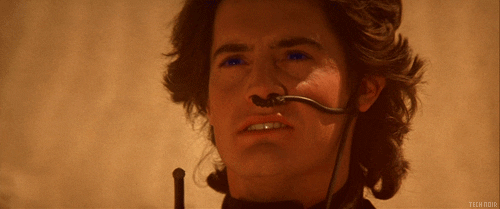
Do you have a topic for Black Lodge/White Lodge? Do you want to write it? We want YOU! Send an email to Lindsay and let us know your ideas and you could be featured in an upcoming Black Lodge/White Lodge debate!



